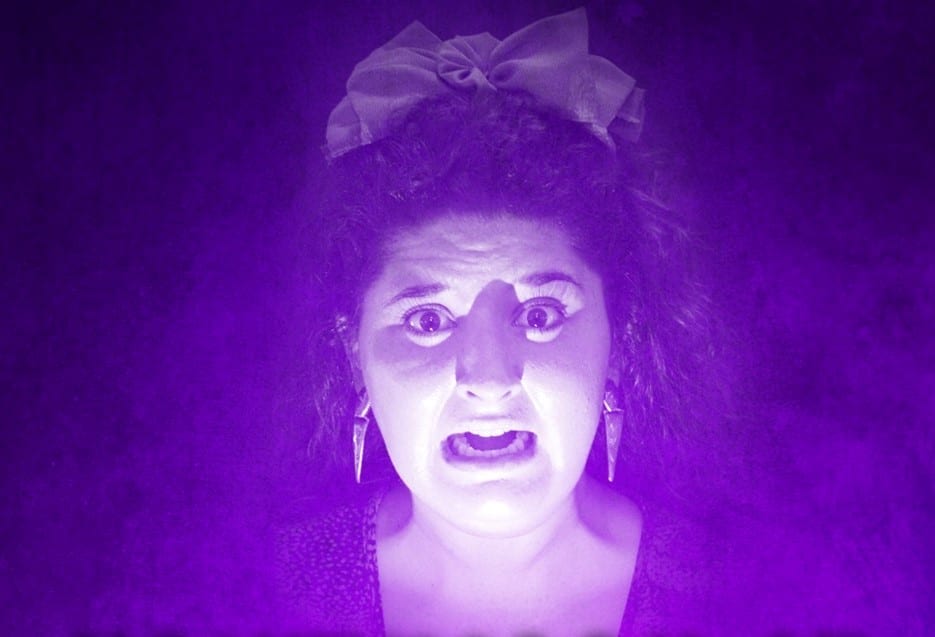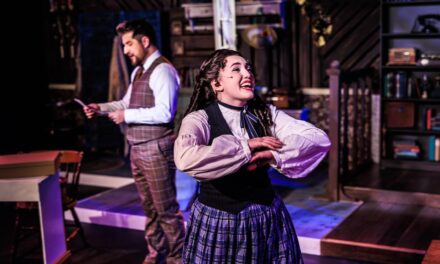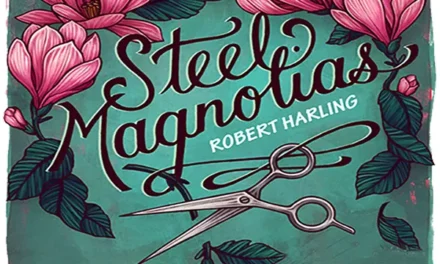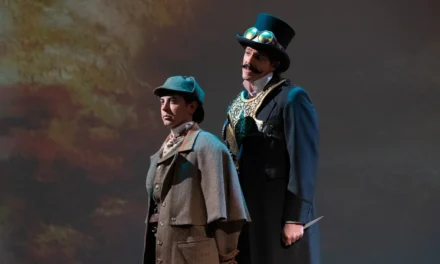WEST JORDAN — A good farce is a beautiful thing. In classic farce, it is almost sure to find tropes like mistaken identity, slamming doors, prat falls, spit takes, and outlandish coincidences. Tricky thing is, none of those tropes comes easy. For jokes to land, timing must be precise, actions must be sharp, and the gags must be carried to their peak, paused, and lightly tipped over the edge. Billed as a “Ghostly Farce,” Pat Cook’s script, Honeymoon at Graveside Manor, contains the skeletal outline of what is required for farce, but I am left wondering if even the most accomplished cast could bring this Halloween-themed mystery to life.

Show closes October 18, 2019.
The story centers on horror writer Tyler Thorncraft’s decision to bring his bride, Marion, to his family’s supposedly haunted manor house for their wedding night. The couple is played with aplomb by John Roh and Liza Tomkinson. Roh’s southern drawl was the grounding feature of the play’s location, and Tomkinson’s full-bodied hysterics were consistently over the top. Jen Crabb, as the sassy but lovable local cleaning woman, Sophie, maintained a consistent focus and earned her laughs. But perhaps due to the inconsistent antics of the script, other cast members struggled to create any kind of rhythm in their comedic moments. A trio of teenagers attempting to pull pranks in the old house weave in and out of the action. Their function seems primarily to add additional roles in a story that is scant on action and long on repetitive gags. A hapless police officer and Tyler’s mouthy editor also introduce overly complex hijinks. All these characters swirl in and out of the story surrounding a pair of mysterious figures who are constantly threatening violence but inexplicably never executing it. After the third or fifth or sixth time one of these ghouls brandished a weapon, I gave up on feeling worried about any danger. “Crazy” is a difficult intention to perform under the best circumstances, and the stakes of this script ride on little more than these two mysterious figures being consistently inconsistent. In one moment, the mysterious man walks off stage gleefully following the person he is planning to murder only to reappear a few minutes later, eager to save another character from similar danger. This could perhaps be attributed to the script, which asks the actor to split the character with a Gollum-like double nature, but the actor is not successful at physically or vocally differentiating the two sides.
Director Kassidy Gull has made an effort to press the comedy by carrying some gags to their extreme. This effort is evidenced in particular by what can be called the Thorncraft gag. Anytime the word “Thorncraft” is spoken, everyone on stage pauses to look meaningfully toward the audience before going on with the action. As the name repeated something like fifty times, and sometimes three times in a single sentence, this action becomes absurd. Even more so, as characters who are otherwise unconscious also partake in the gag. Done right, this action might have brought the house down with laughter and elevated the performance from what might be dubbed as cute or silly to something ‘campy’ and self-aware. Unfortunately, the gag is not executed with consistent focus. Some actors turn their heads late or not at all. Had the gag been used well and had there been an introduction to other moments of actors breaking the fourth wall and connecting with the audience, I might have bought into it. Perhaps it could have been matched with an increasingly loud and ridiculous thunderclap, or with the actors being allowed to call each other out for missing the cue, or with actors being allowed to empathize with the audience’s feeling that it was ridiculous. But instead, the more the gag repeated, the more distant I grew.
Costumes and props are all adequate for the production, though I did find myself questioning what decade and location the action was supposed to be occurring in. As the characters are all quirky and contemporary fashion is currently swerving into the trends of my youth, it took me some time to determine that the action was set in the rural southern United States of the 1980s. The lighting and sound are particularly impressive for the small and tricky space. The choice to raise the stage up above the audience seems a good one, especially for a script that has actors fainting and being knocked out over and over. There is some tricky business of an onstage secret passage that is mostly carried out well but might get sharper as the production progresses.
I will always admire true community theatre. It is no easy feat to gather busy adults who live with the daily pressures of family and work and to induce them to memorize lines, work out blocking, and build sets. Sugar Factory Playhouse is a true community theatre and thus is deserving of admiration. I was pleased to see a strong crowd of loving friends and family in attendance at opening night, and I hope that these dedicated creators will continue to be applauded for their efforts. However, I would encourage the actors to keep pushing themselves to discover their next level of clarity and focus, and I hope that going forward the producers choose stronger scripts on which to build their foundations.

This review generously sponsored by a grant from the Salt Lake County Zoo, Arts, and Parks program.





